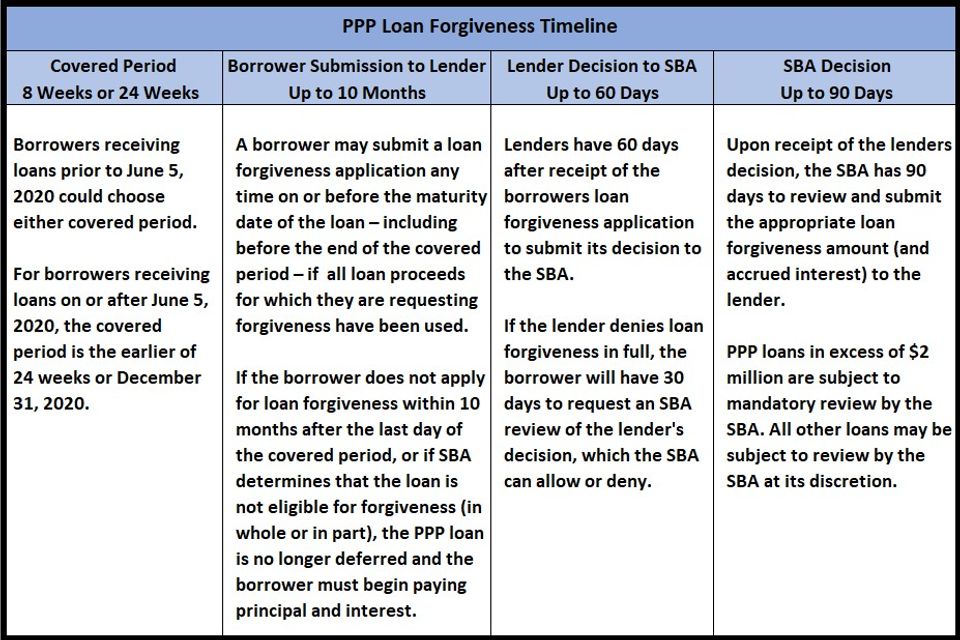Two Key Questions Remain Unanswered:
Will Congress move forward with some type of blanket forgiveness on PPP loans in an amount of $150,000 or less?
Will Congress act to override the position taken by the Internal Revenue Service (IRS), wherein it has concluded that business expenses paid using a PPP loan that has been forgiven are not deductible?
A common thought is that borrowers should wait to file their loan forgiveness applications until these questions have been resolved. However, there is no way of knowing when a decision will be made or what the outcome may be. We will continue to monitor events and provide updates when appropriate.
Tax Issues:
Based on current guidance, if a borrower receives forgiveness in 2020, they will have nontaxable income and nondeductible expenses.
If a borrower does not receive loan forgiveness until 2021, it will be important to determine whether there has been any changes to tax law that will affect the reporting of the loan forgiveness.
The borrower has a choice to proceed with filing their tax returns when due in accordance with current guidance and amend later if appropriate, or file for an extension to allow more time for further clarification. Either way, careful consideration of how much tax to pay is important.
Based on the foregoing, borrowers may need to make adjustments to their estimated tax payments to avoid penalties.
Although the IRS has not specifically addressed the matter of an EIDL grant, its position has been that any low-interest disaster loan amounts cancelled or forgiven should be included in gross income in the year of cancellation. EIDL proceeds can be used to pay expenses.
Will Congress move forward with some type of blanket forgiveness on PPP loans in an amount of $150,000 or less?
Will Congress act to override the position taken by the Internal Revenue Service (IRS), wherein it has concluded that business expenses paid using a PPP loan that has been forgiven are not deductible?
A common thought is that borrowers should wait to file their loan forgiveness applications until these questions have been resolved. However, there is no way of knowing when a decision will be made or what the outcome may be. We will continue to monitor events and provide updates when appropriate.
Tax Issues:
Based on current guidance, if a borrower receives forgiveness in 2020, they will have nontaxable income and nondeductible expenses.
If a borrower does not receive loan forgiveness until 2021, it will be important to determine whether there has been any changes to tax law that will affect the reporting of the loan forgiveness.
The borrower has a choice to proceed with filing their tax returns when due in accordance with current guidance and amend later if appropriate, or file for an extension to allow more time for further clarification. Either way, careful consideration of how much tax to pay is important.
Based on the foregoing, borrowers may need to make adjustments to their estimated tax payments to avoid penalties.
Although the IRS has not specifically addressed the matter of an EIDL grant, its position has been that any low-interest disaster loan amounts cancelled or forgiven should be included in gross income in the year of cancellation. EIDL proceeds can be used to pay expenses.

